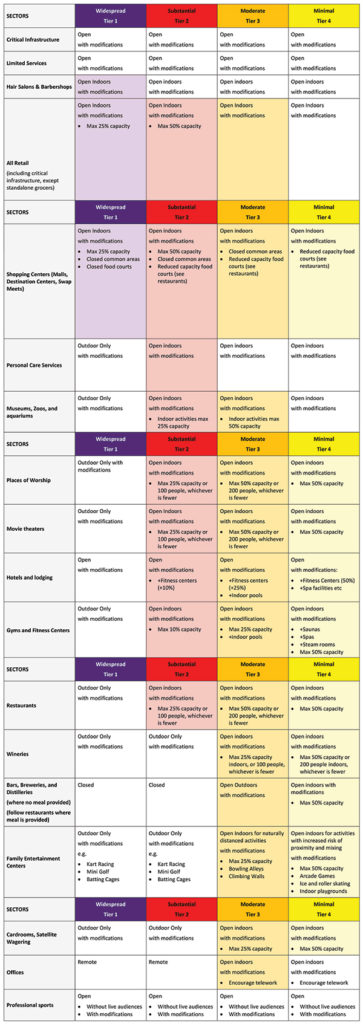San Luis Obispo County Health Officials continue to fight the coronavirus pandemic with new confirmed cases continuing to build but slowing somewhat; and making a shift in focus to mental health issues during September, which is “National Suicide Prevention Month.”
At a Sept. 15 news briefing, County Suicide Prevention Coordinator, Alysia Hendry, said, “It is a time to collectively acknowledge that suicide is a leading cause of death in our country and in our county, and also a time to honor those we have lost to suicide, along with their friends and families, and everyone who faces the challenge of waking up every day, living with the pain that sometimes makes this world seemingly unbearable.”
Hendry, who is co-chair of the Suicide Prevention Council added, “San Luis Obispo County has had its fair share of difficult times in recent months. And while we wish there was a secret recipe or magical pill that could resolve these challenges, we remain hopeful that our community will prove to be resilient as we navigate these difficult times together. It is true that we do not know the lasting economic, social and emotional effects that will be felt across the county in the months and years to come.”
Meghan Boaz Alvarez, clinical director at Transitions-Mental Health Association and co-chair of the Suicide Prevention Council, said, “Individuals with mental health issues may have a harder time than usual, and people without any underlying mental health conditions might be finding themselves struggling with depression, anxiety, or even just the effects of the ongoing isolation and disconnection from family and friends.”
Many people are struggling with depression, she said, anxiety, and the effects of the COVID-19 shelter-at-home orders. “Depression, anxiety, drug or alcohol problems,” Boaz Alvarez said, “all of these things can be warning signs of suicide, but it’s also important to remember that individuals who don’t have any of those problems can be at risk. Any one of us can reach a point where our resources are tapped and our ability to cope is just stretched too thin.”
Look for Signs in Others
Boaz Alvarez urged people to look for signs in the behaviors of others, from feelings of hopelessness, to statements like, “My family would be better off without me,” are clear evidence that someone could be going through a hard time.
“Usually we tell people to look for withdrawal from family and friends and isolation, discontinuing usual activities,” Boaz Alvarez said. “I feel like that’s a tough one to assess for right now, because most of us are a little disconnected from our family and friends and usual activities. So what I would say about that is pay attention to those who are close to you. Look for signs of disconnection.”
Changes in mood or behavior, anger and irritability are also signs of concern. She urged people to speak up, ask how a person you have concerns about is doing? Show concern.
“We know from our interviews with suicide attempt survivors,” she said, “that on the day that they made their attempt, if somebody had said, ‘Hey, are you doing okay?’ or reached out to them, it might’ve changed the outcome. And that simple act is something that anyone of us can do.”
Transitions will ben started a couple of new programs soon to bridge some of the gap form the needs to the available resources for people in crisis — a therapy clinic offering short-term counseling at now cost; and a support program through texting.
County Public Health Officer, Dr. Penny Borenstein, said, “we in public health and myself are acutely aware that there’s a lot more going on in the world than the communicable disease or the virus that transmits known as COVID and all the impacts. And along with that, to talk about suicide prevention is incredibly important as it relates to this disease and our community in general.”
In the latest COVID stats, as of Sept. 21, the County reported 3,438 confirmed cases since the pandemic hit in March. Some 3,177 people have fully recovered. There were 218 people with the virus recovering at home and 13 people in the hospital, with five in intensive care units. Virus deaths have to reach 27.
Of the cases, 24.99 % were attributed to community spread, and there were 289 cases reported among the inmates and staff at CMC.
Thus far, 184 people have been hospitalized countywide, 38 have gone into ICUs. According to the County, there were 369 hospital beds available and 53 ICU beds.
“We have under 200 people who’ve been there for a number of days,” Dr. Borenstein said, “who are considered active cases and able to transmit in the community setting who are among those who are recovering at home.”
Cases by city are: Paso Robles with 820; SLO-581; Atascadero-363; Nipomo-338; CMC 289; Arroyo Grande-214; Grover Beach-158; Templeton-127; San Miguel-117; Oceano-105; Los Osos-56; Pismo Beach-63; Morro Bay-55; Cambria-34; Shandon-43; Santa Margarita-31; Cayucos-17; Creston-15; and San Simeon-six.
Finally Some Good News County Moves to red tier
(The following information was released minutes before press time)
County Health Officer Dr. Penny Borenstein confirmed today that more San Luis Obispo County businesses can reopen indoor operations with modifications and capacity limits — per the State’s tiered, color-coded Blueprint for a Safer Economy — but warns of a potential backslide as new COVID-19 cases spike this week.
On September 22, SLO County met the State’s red tier case rate and positivity rate criteria for two consecutive weeks. As a result, the risk of COVID-19 in SLO County has been downgraded from widespread to substantial, and SLO County can now move from the purple tier, the most restrictive tier – to the red tier effective immediately.
“While we celebrate this small success, we must stay vigilant,” Dr. Borenstein added. “Our progress depends on each person in SLO County. We need everyone to do their part to slow the spread of COVID-19 in our community.”
The State’s Blueprint allows counties in the red tier to reopen indoor operations for some additional business sectors and allows for certain activities to resume. Local businesses must follow all State guidance for their industry and self-certify that they are ready to reopen.
“Outdoor operations remain the safest environment to slow the spread of COVID-19 and should be supported whenever feasible,” Dr. Borenstein said. “If we see an increase in the spread of COVID-19 here, we will move back to purple and most indoor operations will close again very soon.”
Recent case investigations have identified cases spread between different households at gatherings. The nature of these gatherings (bringing together people from multiple households for a prolonged time, often indoors or with shared food and beverages) creates the perfect environment for COVID-19 to spread easily and quickly.
What about the rest of society? What will happen with things like recreation classes and organized sports? So life back to normal is when we get out of the tiers entirely. “So even in the least restrictive tier, yellow,” she explained, “we’re still not talking about big concert venues, we’re still not talking about parades, we’re still not talking about large weddings. So it’s a step back toward where we had been, but we still have a long way to go.”
She added that “normal” life might not return for 6 months, a year or maybe even longer, depending on when a vaccine is developed and wide spread. She also fears a recurrence of the disease, as has been seen in Europe.
“This county has been relatively spared all of that drama and trauma, but it is a communicable disease,” she said. “We still remain at risk if we were to let our guard down, so I’m constantly thanking our community for doing all that they are, saying that there is more that we can do so we can get our case numbers down.
“I often get asked, are we ever going to get back to life as we know it?” she said. “I do believe that is the case, but we need to be patient and we need to reach out to our friends in different ways to make sure that we feel safe and secure and happy in this new form of life for the foreseeable future.”
If readers are interested in getting tested for COVID, they can go online to: readyslo.org for a list of community testing location, and can also get tested at local clinics and Urgent Care facilities.
A pop-up testing site in Morro Bay has closed and moved to the Atascadero Lake Park Pavilion. A testing site is also set up at the SLO Vet’s Hall on Grand Avenue off Monterey Street.



